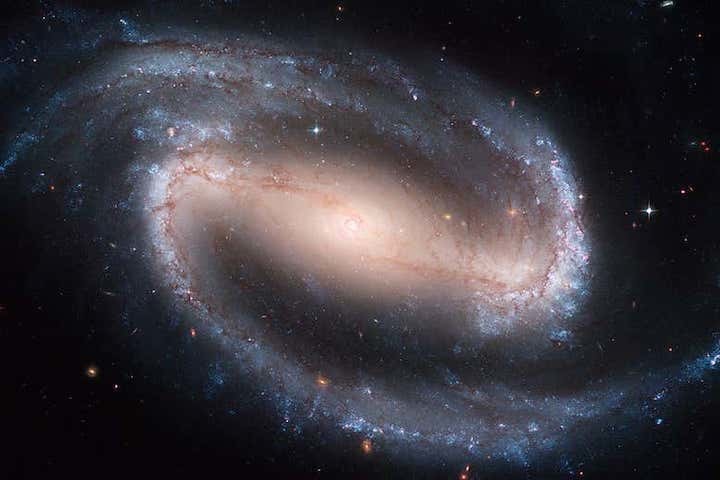15.06.2021

Spiral galaxies like the Milky Way – and this one, NGC 1300 – have a bar running through their centre
NASA, ESA, STScI/AURA
Our galaxy has an enormous bar made of stars at its centre, from which its spiral arms emanate. Like the rest of the galaxy, that bar rotates, but the dark matter suffusing the Milky Way is slowing it down by about 13 per cent every billion years.
Astronomers have long argued about the rotation speed of the galactic bar, and whether it is speeding up or slowing down. Rimpei Chiba at the University of Oxford and Ralph Schönrich at University College London argue it is slowing, and they have used observations of stars from the Gaia space telescope to calculate the rate of its gradual deceleration.
This was possible because some stars, rather than orbiting the centre of the galaxy, orbit what is called a Lagrangian point, where the gravity from the galactic bar and the outward push from its rotation balance to create a stable gravitational point. The location of this point is dependent on the rotation speed of the galactic bar.
If the bar’s rotation slows, the Lagrangian point moves outward, dragging along the stars that orbit it and picking up other, younger stars as it goes. By measuring the ages of the stars in this clump and using them like the rings in a tree stump, the researchers determined that the Lagrangian point is moving outwards at a rate of about 2600 light years per billion years. That translates to the galactic bar’s rotation slowing by about 13 per cent per billion years.
This slowing is another piece of evidence that dark matter is real, says Schönrich. Ideas that would explain away other effects of dark matter through modifications to the theory of gravity cannot explain the drag on the bar. “In alternative theories of gravity, there is no counterweight and the bar doesn’t slow down,” he says. “Our result is very bad for those theories, and we can see that, in the future, it could constrain dark matter models.”
To do that, we will need more data on the clump of stars orbiting the galactic Lagrangian point. “What we currently see is, we are cutting into the tree, but we currently only have the ability to peel back the outer tree rings. But with the next Gaia data releases, we will be able to peel back more,” says Schönrich.
This could help us figure out what dark matter is made of, as well as teaching us about the formation and evolution of our galaxy.
Quelle: NewScientist
